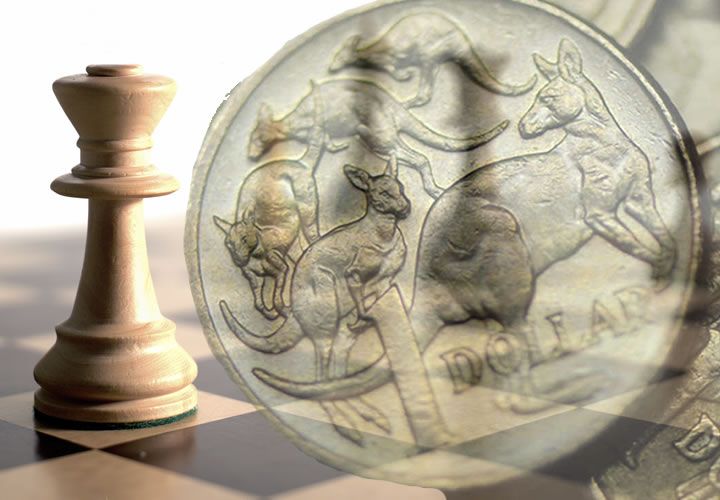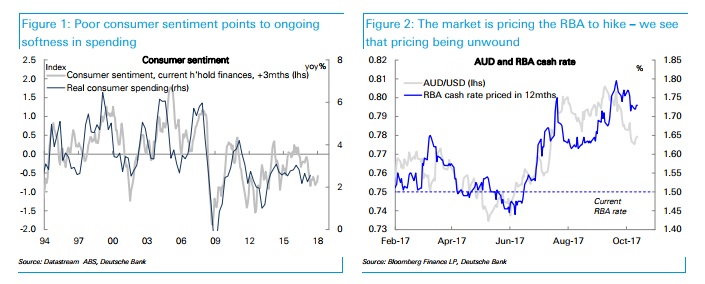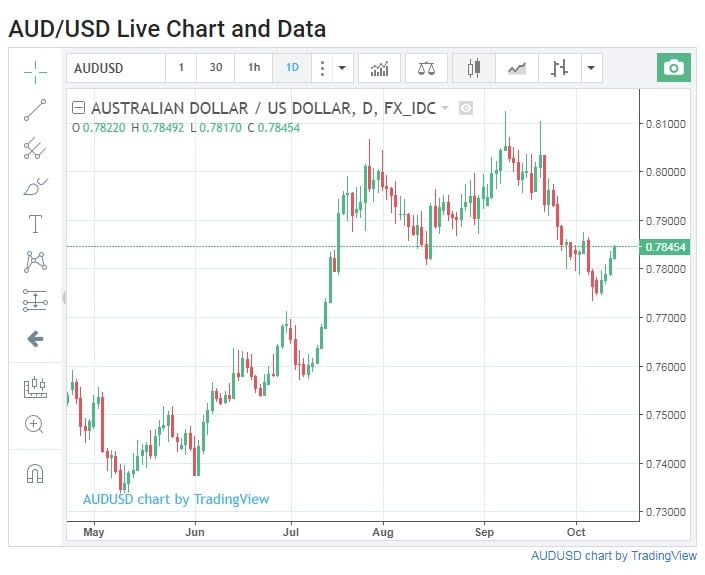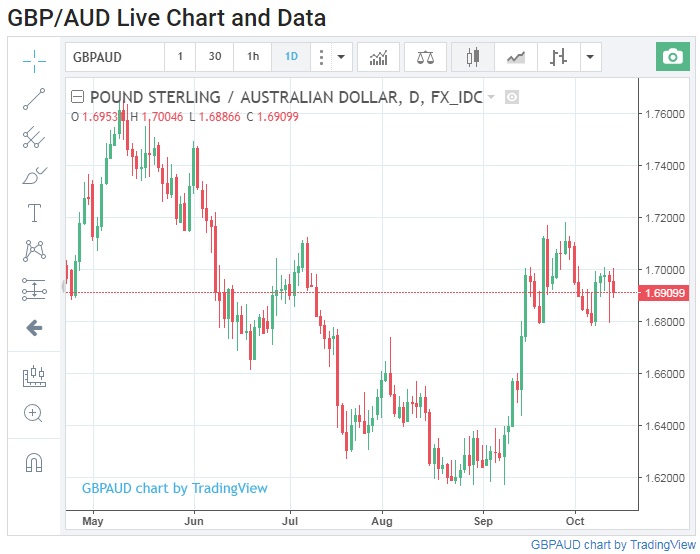Strategists Maintain Expectations for Australian Dollar Weakness
- Written by: James Skinner

AUD/USD could see the most downside of all, although a lower risk trade for speculators is to short the Aussie against emerging market currencies, according to Deutsche Bank strategists.
The Australian Dollar should weaken broadly over the coming months as expectations for Australian interest rates evolve and the market increasingly looks for the Reserve Bank of Australia to stay on hold for longer.
Traders should sell the Australian Dollar short against a range of emerging market currencies, according to strategists at Deutsche Bank, as well as against the US Dollar.
The AUD/USD rate could see the most downside of all, although a lower risk trade for speculators is to short the Aussie against emerging markets.
This is because many emerging markets are highly exposed to Chinese growth, just like Australia, so the risk a stronger than expected Chinese economy poses to AUD shorts is largely hedged out by focusing trades in this area.
Against the Dollar, however, the Aussie would be expected to strengthen in response to better than expected Chinese economic data.
“Rates pricing for the RBA remains too hawkish, in our view, with 40bps of tightening baked into the curve for next year,” says Tim Baker, a strategist at Deutsche Bank.
Baker flags the neutral tone of the RBA in its October policy statement as a red herring for the Australian currency, suggestive of discomfort among rate setters with current market pricing of the Dollar.
“As we’ve written previously, there’s a problem with the quality of jobs growth, and consumers’ view of their own finances remains depressed, dampening spending,” says Baker. “As such, we see RBA hike pricing reducing further which would weigh on AUD.”

Baker forecasts that the RBA, which left the cash rate unchanged at 1.5% for the 14th month in October, will stay on hold throughout 2018. This means no rate increase from the RBA for at least another year.
“The RBA aside, AUD/USD is now trading excessively rich against the real rate spread, even if the improving trade balance has reduced the need for capital inflows,” says Baker.
Deutsche Bank strategists have recently advocated selling the AUD/USD pair short around the 0.7757 level, with a stop loss at 0.7880 and a target of 0.7500.
Baker also suggests selling the Australian Dollar short against the Colombian Peso, the Indonesian Rupiah, the Russian Rouble and the Mexican Peso.
The Australian Dollar was quoted 0.25% higher, at 0.7846, against the US Dollar Friday. It was also broadly higher against other currencies, including some from emerging markets.
Friday's move from the Australian Dollar came after Chinese trade data showed imports of iron ore, Australia's largest export, rising to a record high during September.
Gains, as well as the interest rate outlook, were tempered somewhat by the latest RBA Financial Stability report. Here, policy makers warned once again that rate setters will need to consider the impact an eventual rise in rates will have on heavily indebted households.

Get up to 5% more foreign exchange by using a specialist provider by getting closer to the real market rate and avoid the gaping spreads charged by your bank for international payments. Learn more here.
Bearish Voices Grow Louder
Strategists at Morgan Stanley and BNY Mellon can also be found in a growing line of Australian Dollar bears.
Hans Redeker, a foreign exchange strategist at Morgan Stanley, has recommended traders look to short the AUD/USD pair around the 0.7856 level, placing a stop loss at 0.7960 and targeting a move down to 0.7500.
“Should our framework of higher funding costs undermining these leveraged economies come to fruition, currency moves will be substantial,” Redeker writes in a recent note. “Strategic CAD, AUD and NZD shorts should belong in investors' FX portfolios.”
BNY Mellon currency strategist Neil Mellor flagged Monday that the AUD/USD pair has been testing a key technical support level at or around 0.7772 of late. The pair broke below this threshold later in the Monday session.
“Whether these levels will hold remains to be seen, but if they do not, then with CME data still showing a net long non-commercial position of 77k contracts for the currency – the highest since early 2013 – there is clearly the potential for a move of fairly significant proportions,” Mellor wrote ahead of Monday’s move.
But it’s not just the AUD/USD pair that could be vulnerable to further downside. The Aussie currency could face pressure across the G10 basket during the coming months as central banks in Europe push ahead with policy normalisation.
Australian policy makers have repeatedly flagged the need to consider the impact that rising rates could have on a debt laden consumer in an environment of muted wage growth.
So the European Central Bank’s move to unwind its quantitative easing program, mounting expectations the Bank of England will soon withdraw stimulus both mean fundamentals favour Sterling and the Euro over the Aussie at present.
The Pound-to-Australian-Dollar rate was quoted 0.25% lower at 1.6907 during morning trading Friday. The Euro-to-Australian-Dollar rate was quoted 0.23% lower at 1.5078.





